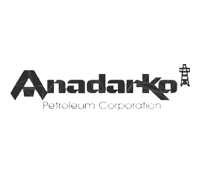Minerals Exploration Frequently Asked Questions
1. What is “passive’ sampling of soil vapors?
Passive refers to the time-integrated collection of soil vapors via a buried, sorbent-based collector, over an extended period of time (typically 30-60 days).
2. How does passive sampling of soil vapors compare to other geochemical methods?
Passive sampling is based on the direct detection of vapors emanating from mineralization. Typical compunds include sulfur compounds, alkanes, and methylated organics that result from oxidation-reduction reaction during mineralization. This is different from many other surface geochemical techniques, which look for inorganic compounds.
The primary advantages of passive sampling (days) versus short term, “active” sampling (minutes) include the ability of passive techniques to successfully work in soils with low permeability or high moisture, to yield high sensitivity by concentrating the vapors, to work in a variety of ambient conditions and to detect a broader range of compounds than active methods.
3. What impact does the deposit depth have on the success of surface geochemistry?
In theory, the deeper the mineralization, the more sensitive the surface technique needs to be for accurate and sensitive detection. Successful surveys have been conducted over deposits as deep as 600 meters.
4. Can different oxidation states or zonation be separately identified?
This is possible if the mineral sources are chemically different. Integrating sample data from known mineralized zones and background areas (modeling) is critical for success in this application.
5. Does surface geochemistry also identify the depth to the mineralization?
Surface geochemical methods primarily delineate the aerial extent of mineralization but do not yield information regarding deposit depth.
6. Does surface or shallow contamination interfere with results?
Organic compounds from shallow contamination can be detected but, with the appropriate geochemical method, can be excluded from the final geochemical interpretation.
7. How does soil type or moisture impact results?
Sampling with passive techniques integrates signal over time, therefore these impacts are minimized and do not affect results. However, results from active soil gas methods that sample over a very short period of time can be significantly impacted by soil moisture or permeability. AGI’s passive sampler uses proprietary engineered hydrophobic adsorbents along with water management techniques that minimize the effects of moisture.
8. What is the source of the gases detected over ore deposits?
Possible sources of organic gases include methylated compounds from bio-oxidation, organic compounds incorporated in the hydrothermal fluids from sedimentary rocks, and oxidation reaction products, especially sulfur compounds.
9. What is the optimal sample spacing?
This varies with deposit type; a porphyry system may only require one sample per square kilometer, whereas a vein deposit would require closer sample spacing. We work closely with the client’s exploration staff to clearly understand the objectives and deposit model in order to design an effective survey.





















